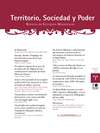Resumen
Resumen: El artículo aborda el estudio de un caballero asturiano del siglo XII, Menendo Enalso, así como de su enterramiento en el monasterio de San Salvador de Cornellana. Su figura nos permite profundizar en la comprensión de un grupo social, el de los infanzones, reconstruyendo su comportamiento, sus actitudes mentales, sus estructuras familiares, su visión funeraria y el papel que la sociedad medieval les destinó. En este sentido, Menendo pertenece a una de las familias más destacadas de la pequeña nobleza asturiana.
Palabras clave: caballero, lauda, mentalidad funeraria, familia, esquisitor.
Abstract: The article studies Menendo Enalso, an Asturian knight who lives between the 70’s of the 11th century and the year 1130. His figure allows us to know also to his family and the social class to which they belong, the low Asturian nobility. The last aspect which we analyzed is the tomb of this personage in the monastery of Cornellana, of which a fragment of his sarcophagus with epitafio is conserved undertaker, deepening in the understanding of the universe of the death in the Middle Age. Menendo’s family presents a series of own social and mental behaviours of the knights who have ascended from the group of the proprietary farmers. His patrimony is formed by numerous properties of small and half size, scattered in the territories of the central Asturias. In this patrimony they emphasize the villages, the farms, the servants and the dominion of churches and monasteries. Nevertheless, from end of 11th century, the Enalso and their cousins, the Froilaz, donate, to promote themselves socially and to obtain pardon by their sins, numerous properties to the monasteries of San Vicente and San Juan of Corias and episcopal church of San Salvador of Oviedo, specially their familiar churches. Of this form, they constitute the last generation of founders of own churches, that yield them to the bishop under the influence of the Gregorian reform, that begins to be applied at that time in the kingdom of Castile and Leon. Socially, Menendo and his relatives are conscious of their property to a privileged sector and in documents they appear mentioned as milites, boni homines, noble or domnos. The men of the family carry out legal activities and the own Menendo emphasizes like judicial inquiring or exquisitor. Some members, like his brother Pedro, reach important positions in the political administration, getting to be merinos or royal representing in Asturias. The women of the family contribute to social prestige, marrying with other members of the low nobility. Some of them, when they are widowed, will become nuns, living in the monastery of San Pelayo of Oviedo. It is the case of Menendo’s mother, Fakilo, his sister María or his aunt Gontrodo Osoriz, that will be abbess. But in addition, they are great proprietors and ladies of the villages. Menendo’s woman, Gontrodo Martínez, belongs to the low nobility of the territory of Tineo and gets to colonize one village. Nevertheless, the social ascent to the great aristocracy is very difficult. Menendo and his family establish feudal relations with the great counts of the region, in special the lineage of Pedro Peláez and his nephew Suero Bermúdez. These counts protect them and in return Menendo and his parents make different services for them. In addition, kings Alfonso VI and Alfonso VII , that they look for new social bases in the low nobility, will support to members of the family like his brother Pedro or his son Gonzalo. When Menendo dies, he will be buried in the monastery of San Salvador of Cornellana, property of his feudal master, count Suero Bermúdez. Years later, Menendo’s descendants will make a new tomb in which epitaph with the social and religious merits of Menendo is carved, among them their peregrination to Jerusalem. It is an example of the advertising use of the ancestors to demonstrate the social fame.
Keywords: Knigth, tomb, funeral mentality, family, esquisitor.

